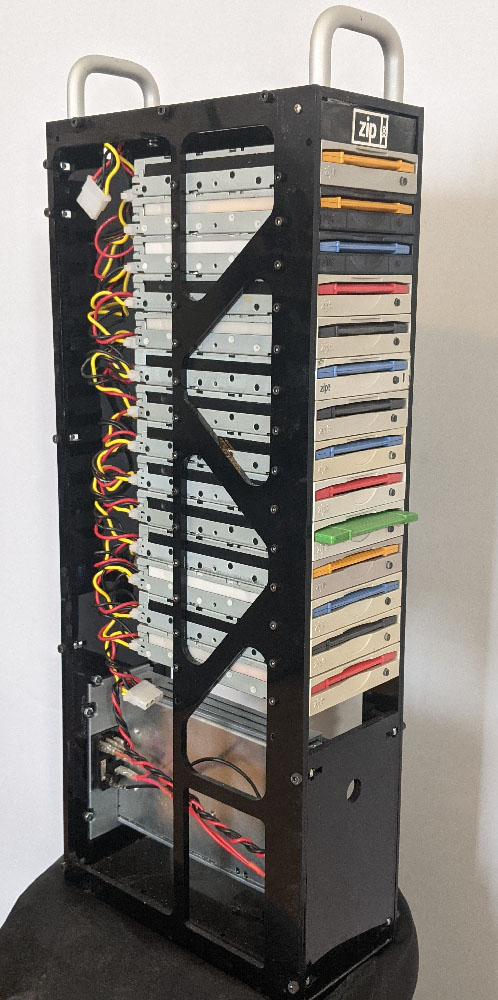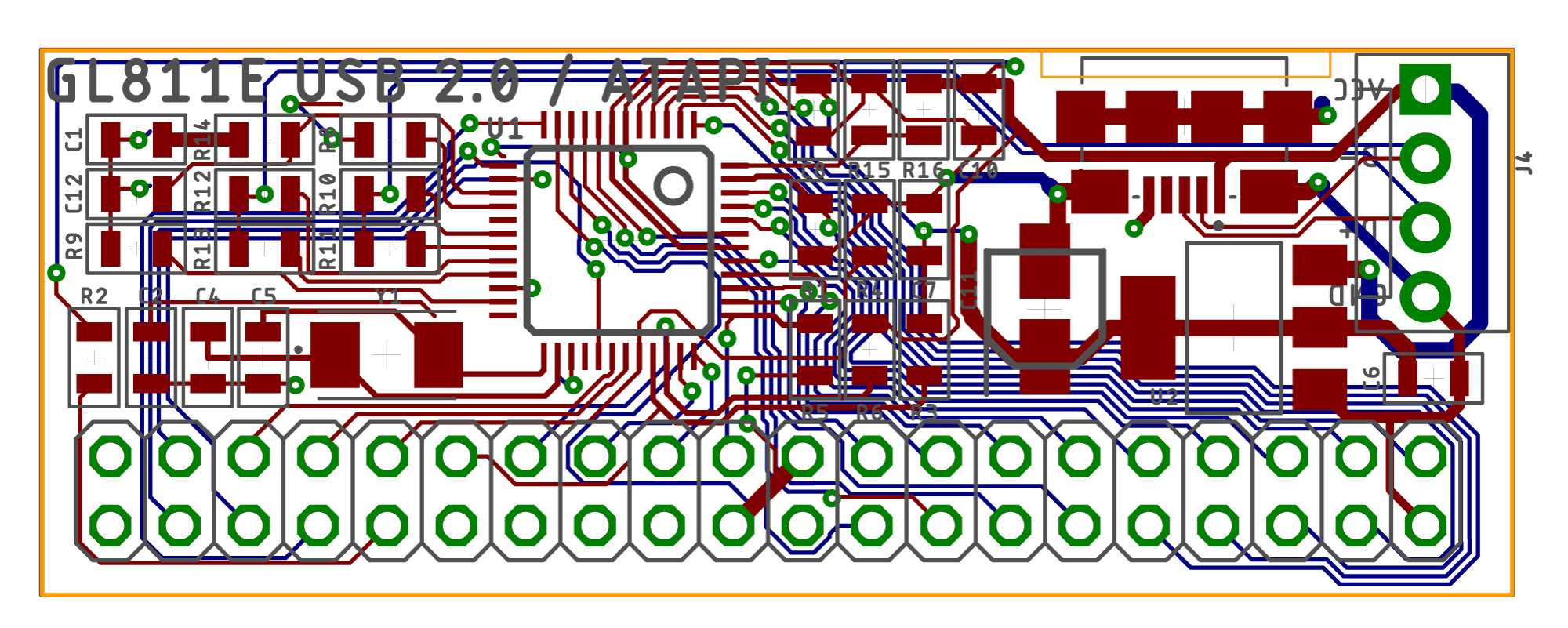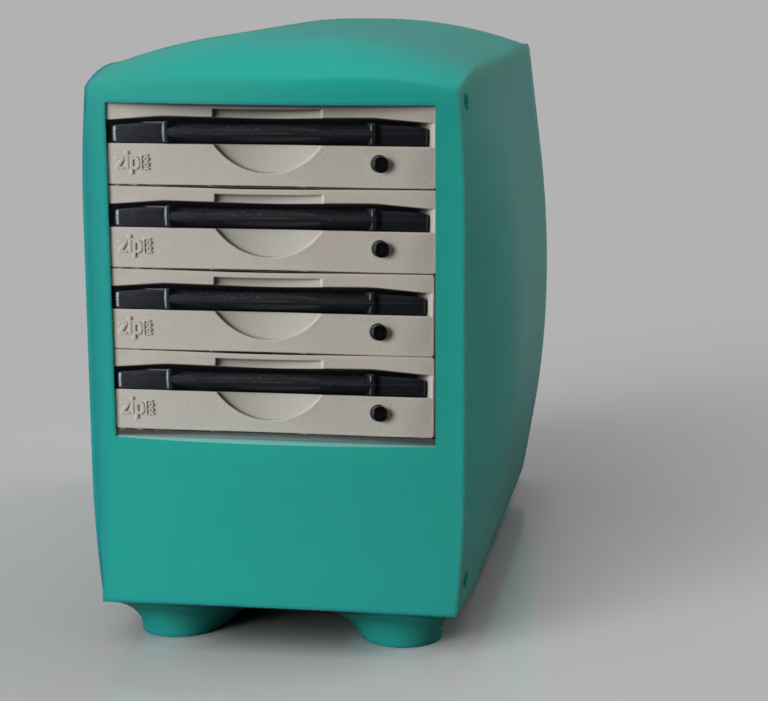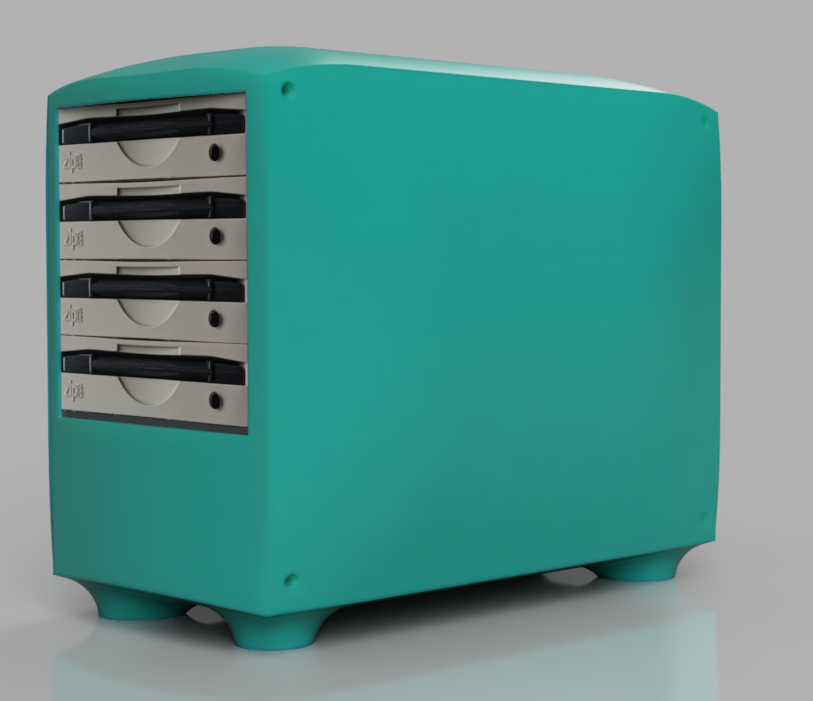Zip Drive Tower
What is it? It’s a tower of Zip drives, all connected over USB. This demands a picture, so:

The Zip drive tower is built from fifteen ATAPI Zip-100 drives. A custom board was made for fifteen ATAPI-to-USB converters.
Why build this?
There are two reasons I built the Zip drive tower. The least important reason is to build a RAID array, just because. This turned out to be just as useless as expected; the array is slow (as Zip drives are very slow) and in RAID 0 configuration only presents a volume ~1.5GB in size. It also draws about 15 Amps at 5V on startup, so it’s far less economical than a thumb drive.
The second reason is to start a record label. The rise of vinyl and cassette relases signals public interest in rare media formats, and it’s too expensive to build a minidisc duplicator. Either way, I can produce some releases for Akai samplers and MPCs.
Building the USB -> IDE Adapters
While new USB to IDE/ATAPI adapters can be purchased, they do not work with what operating systems consider a ‘floppy’ drive; this includes Zip drives, MO drives, and MD-Data drives. There are, however, chipsets that do present floppy drives as standard drives to the OS. In this case, I cloned a GL811E chipset by depopulating and delayering a board:

From there, a replacement PCB was constructed and new boards were made with New Old Stock GL811E chips. These USB to ATAPI adapter boards were then connected to a USB hub where they can be accessed by the OS.

The ‘finished’ version of this project is a four-drive tower, with four Z250 drives, a four-port USB hub, and the IDE->USB adapters. The case for this tower is 3D printed, with a second case printed for SCSI applications:


More information can be found in the ATAPI Tower repository.
